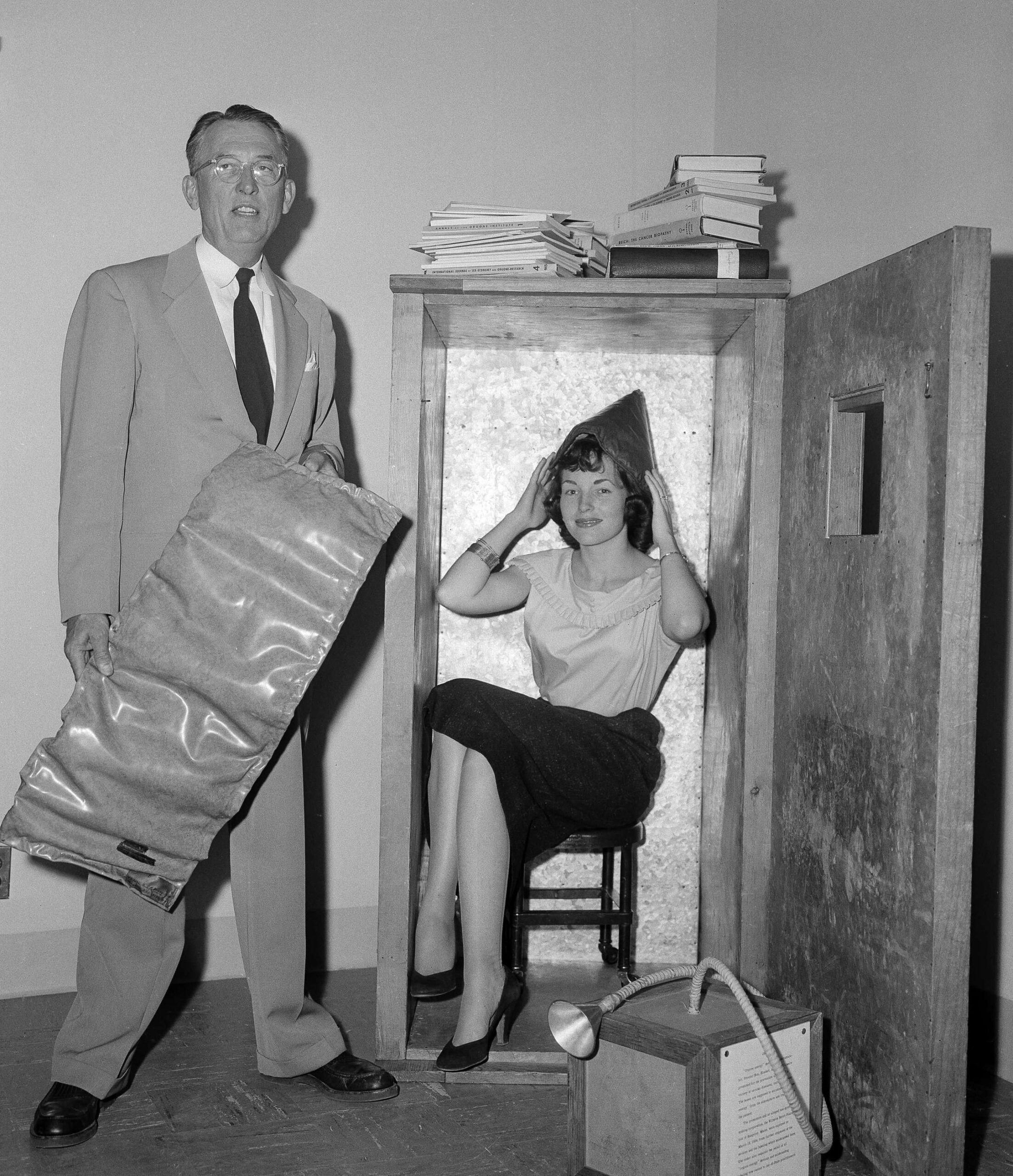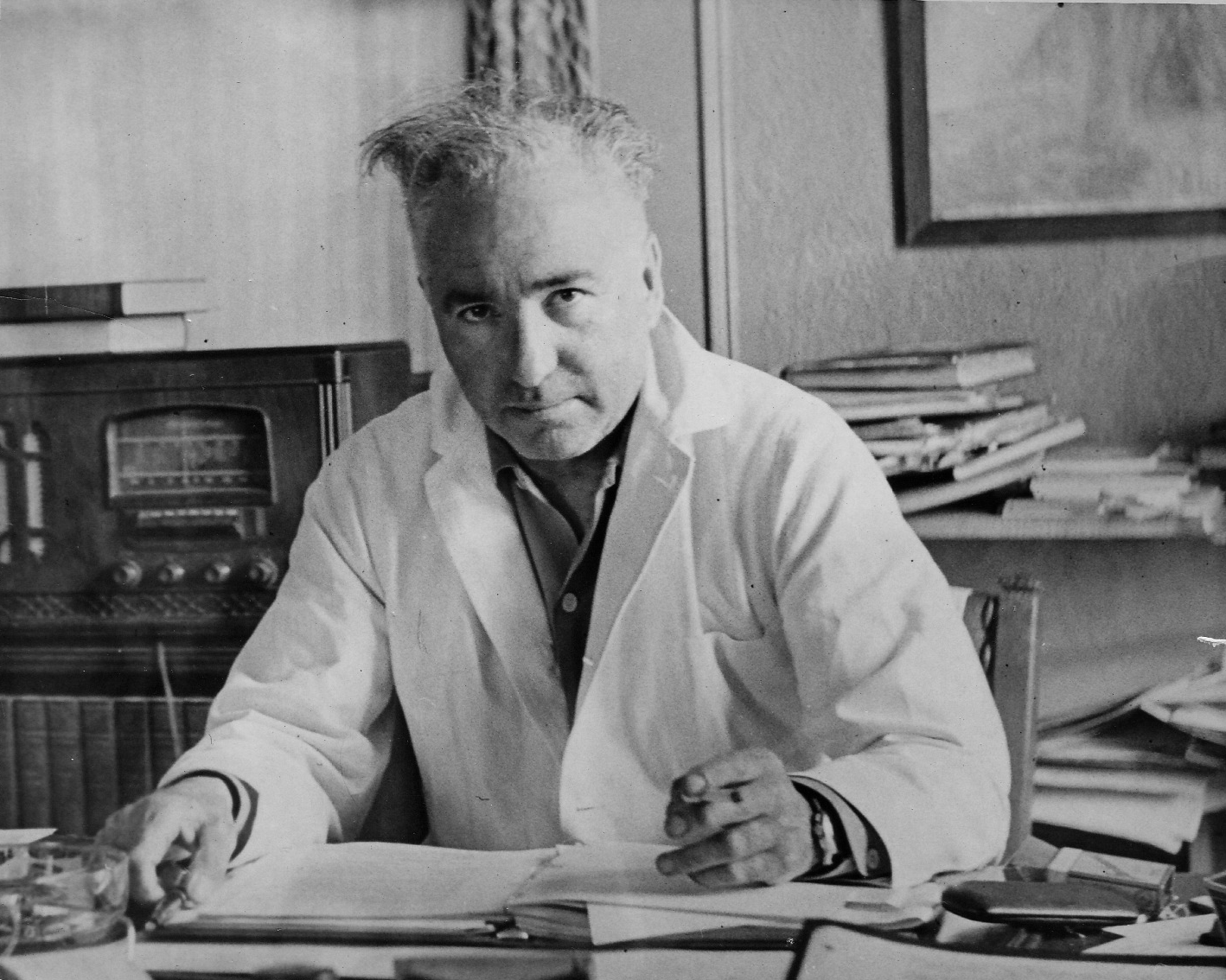(THIS ARTICLE IS MACHINE TRANSLATED by Google from Norwegian)
Håvard Friis Nilsen's monograph on Wilhelm Rich (1897–1957) in Norway has become a comprehensive Reich biography. Many Norwegians had contact with Reich and psykoanalysen before Reich came here in 1934. Reich's time in Vienna and Berlin therefore gets a lot of space. Reich had a significant influence on the Norwegian intellectual environment in the interwar period. Not only psychologists such as Nic Waal and Harald Schjelderup, but also famous authors: some of the most precious passages in the book describe the psychotherapies of Sigurd Hoel and Aksel Sandemose.
After a scandalous debate, Reich left Norway in 1939 and ended up the United States. Several Norwegian analysts visited him, including Ola Raknes and Grethe Hoff. Reich died in an American prison in 1957, aged just 60.
Øverland revealed its repressed ambitions to stand on a plinth.
In the 1930s, Reich was expelled from both the Communist Party and the International Psychoanalytical Association. Then he set out with several researchers and friends in Norway. Nilsen reproduces several statements in which Reich's personality bears some of the responsibility for the conflicts. "Reich has many debts in his life," wrote the financier Rolf Stenersen, who had supported Reich financially. He was not "compliant, and commanding in nature".
Reich's character was characterized by traumatic childhood experiences that created a sense of guilt that he struggled with throughout his life, we learn at the end. Had Nilsen revealed this at the beginning of the book, some of the excitement of the reading would have disappeared. But by letting childhood come to an end, he allows the reader to form their own opinion. The disadvantage is that Reich gets everything right on his side before he comes to Norway.
Nilsen has collected a lot of new material from previously unpublished material, private letters and interviews with survivors. The extensive and labor-intensive project has garnered well-deserved praise from a unanimous group of critics. Those who did not receive the book for Christmas can profitably replace the Easter novel with Nilsen's monograph.

From psychology to biology
In the USA, Reich developed the famous orgone cabinet and acted as a rainmaker with another invention: the "cloudbuster". The late Reich can easily be written off as a confused natural philosopher: He saw the newly discovered sexual "orgone" energy everywhere. American authorities burned his books and put him in prison.
Nilsen summarizes Reich's central point as follows: "The alternation between expansion and contraction, fear and love, is our most basic biological impulse, Reich believed. He saw this as the fundamental duality in all living beings with nervous systems.”
Reich broke up Freud because he believed that the death drive was not biological, but a result of society's oppression. He still ended up with an operational dualism reminiscent of Freud's. Where Freud from 1920 operated with the distinction between eros and death drive, Reich in the USA formulated the fundamental opposition between Orgon and DOR (Deadly Orgon). Ola Raknes has i Wilhelm Reich and Orogmy (1970) provided an easy-to-understand presentation of how Reich pretended that lethal orgone is produced when orgone is bound in muscular tension. But Reich does not pretend that all negative energy can be transformed into positive. Thus, dualism becomes fundamental.
Nilsen somewhere rightly criticizes the political naivety of the early Reich: "It is easy to see that the claim that any kind of morality in the sexual area is like a dam that will lead to floods is an analogy that cannot form the basis of a social outlook. Society will hardly improve if each individual's drives or desires are given free rein."

The reason is that the dam is not only inhibiting, but represents a design that makes life possible. Freud thought that the repetition compulsion and the 'stimulus shield' – what Reich later called the 'character helmet' – also protect the organism. Through habits and socialization, humans lose some of their flexibility, but gain routines and automated competence in return. But when the compulsion to repeat becomes too great, the person's character can become a prison. Where Freud wanted to soften a stuck-up character through talk therapy, Reich attacked the muscle hood directly. Reich initially criticized Freud for not seeing that the neuroses were sociologically conditioned. Mental health and social change thus became two sides of the same coin. But at the end of his life, Reich approached Freud's dualistic operating model.
"You must not sleep"
The title of the book – taken from Arnulf Highlandss well-known poem "You must not sleep" – overemphasizes the connection between psychoanalysis and politics. Øverland had a dream that inspired the poem, and published it in a sexual politics journal (in addition to Samtiden in 1936). The famous poem evokes the concentration camps, Hitler and that Europe is burning: People must wake up!
The late Reich can easily be written off as a confused natural philosopher.
Such political dreams are rare. The unconscious manifests itself as most often rather incomprehensible until one has interpreted the dream. In this way, Øverland's poem also becomes a problematic example of the combination of psychoanalysis and politikk, for which there is no simple formula. In the poem, Øverland links to a long literary tradition in which the dream genre carries political or utopian visions.
Øverland also wrote the article "Sigmund Freud's psychoanalysis" in Samtiden in the winter of 1929. He told a dream he had had: A field had been plowed up, "where a red granite plinth for a monument juts up in an inclined position". The inclined position made the monument a phallic symbol.

He was also associated with the Holberg statue in Bergen. Øverland revealed his repressed ambitions to stand on a pedestal – completely in line with Freud's theory of the dream as an expression of disguised wish fulfillment. The field further reminded of Vestre Gravlund, and Øverland interpreted it both as a death wish and as a hope for resurrection.
Some of the most precious passages in the book are described by Sigurd Hoels and Aksel Sandemose
psychotherapies.
The identification with Holberg is a narcissistic fantasy. Reich would have understood the statue as a 'character armour'. Through therapy, the hood could be partially broken up. But the connection between potency and male self-esteem runs deep. And a bit of infantile assertiveness is what everyone is equipped with. But with an authoritarian leader, the idealized self-image becomes a burden for others. Dictators love to make statues of themselves.
We would laugh at the one who broadcast his dreams of standing on a plinth as conceited, megalomaniacal and inflated. Øverland's dream shows the limits of acceptable behavior in society. But this does not necessarily have political consequences. Limitations for the individual such as norms, culture, customs and usage cannot be dissolved through a sexual political short cut where the therapist mercilessly destroys the patient's armor of character.

Towards a new fascism?
The sociologist Øystein Nilsen makes a connection with Reichs in Dagsavisen (4.10.22). The mass psychology of fascism (1933) and writes that nyfascismen as a social psychological phenomenon is relevant. But neo-fascism is not only due to a classic leader cult combined with followers' rigid personality structure, their authoritarian character and subject mentality, as Reich claimed. Sociality has eroded and become more fluid. It is unstable, without fixed borders, almost the opposite of the authoritarian patriarchy of the interwar period.
Everyone is equipped with a little infantile assertiveness.
The subject oscillates with stock market prices, interest rate fluctuations, inflation and the excitement economy associated with what goes viral. The individuals have shrunk to what Christopher Lasch called "the minimal self", and hibernate in a cave with globalized internet access. But they are still susceptible to authoritarian ideologies.
The topicality of Håvard Friis Nilsen's book on Reich consists, among other things, in the fact that it has become urgent to understand the differences and similarities between fascism in the interwar period and today.


